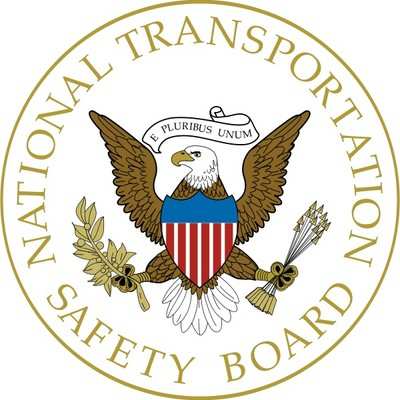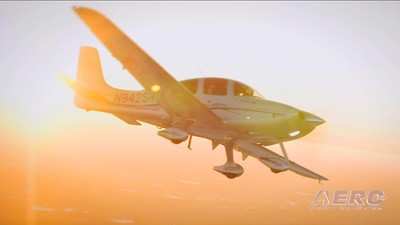After The Flight Instructor Took Control Of The Airplane, The Airplane Descended Below The Proper Glidepath
Location: Tomball, TX Accident Number: CEN22FA405
Date & Time: September 1, 2022, 17:07 Local Registration: N420SS
Aircraft: Cirrus Design Corp SR22 Injuries: 1 Fatal, 2 Serious
Flight Conducted Under: Part 91: General aviation - Instructional

On September 1, 2022, about 1707 central daylight time, a Cirrus Aircraft SR22 airplane, N420SS, was substantially damaged when it was involved in an accident near Tomball, Texas. The flight instructor was fatally injured; the pilot and passenger sustained serious injuries. The airplane was operated as a Title 14 Code of Federal Regulations Part 91 instructional flight.
Earlier in the week, on August 29, 2022, the pilot accepted delivery of his factory-new Cirrus SR22 airplane at the Cirrus Aircraft Vision Center located at the McGhee Tyson Airport (TYS), near Knoxville, Tennessee. He had no previous pilot flying experience in a Cirrus airplane besides a demonstration flight that he completed a couple of years before he purchased his airplane. The pilot was scheduled to receive flight training from a Cirrus Aircraft flight instructor after he accepted delivery of his airplane. According to the pilot, the first flight in his airplane consisted of a takeoff, traffic pattern, and landing. No flight instruction was provided during this initial 10-15 minute delivery flight.
After the initial flight, a Cirrus Aircraft flight instructor began the pilot’s transition training in his new airplane. The first task completed was simulator training on how to use the Cirrus Airframe Parachute System (CAPS), which was followed by training on the Perspective+ system using a tabletop simulator.
On August 30, 2022, the pilot began flight training in his airplane with the Cirrus Aircraft flight instructor. The pilot stated that nothing was “normal” with the flights because air traffic control (ATC) required the airplane be flown at 150 knots while in the Knoxville Class-C airspace, and because the engine had to be operated at or above 75% power while it was being broken in. The flight instructor asked what the pilot wanted to accomplish during his flight training, and the pilot told the flight instructor that he needed to learn how to fly instrument approaches and to make takeoff and landings in the airplane. The pilot believed it was odd that the flight instructor did not provide more feedback on how to fly the airplane, such as providing the different airspeeds to be flown during the different phases of flight.
On August 31, 2022, the weather at TYS was windy, so the pilot asked his flight instructor if they could fly to an uncontrolled airport where they could work on flying the airplane in the traffic pattern and conduct takeoff and landings. It was during this flight that the flight instructor first provided the reference airspeeds for downwind, base, and final approach.
The pilot stated that he placed a note with the reference airspeeds on the cockpit dashboard. The pilot stated that between Wednesday evening and early Thursday morning he woke up shivering and sweating. On the morning of September 1, 2022, the pilot told his flight instructor that he did not feel well, and the decision was made to fly to the pilot’s homebase located at David Wayne Hooks Memorial Airport (DWH), Spring, Texas. The pilot explained that if he felt better on Friday, they would continue his transition flight training in the Houston area on Friday and possibly on Saturday. The flight instructor had not planned on flying to DWH and, as such, he had to reschedule some other work obligations and kennel his dog for at least one night.
The first flight leg was supposed to be from TYS to Alexandria International Airport (AEX), Alexandria, Louisiana. However, due to adverse weather that impacted their intended route, the flight diverted to Monroe Regional Airport (MLU), Monroe, Louisiana. The pilot stated that the flight instructor appeared to fall asleep for a portion of the flight from TYS to MLU. The pilot stated that he flew most of the flight using the autopilot, making necessary heading changes using the heading bug on the primary flight display (PFD). The pilot stated the airplane was topped-off with fuel after landing at MLU and that they were on the ground for about 30-45 minutes, during which the pilot and the passenger each drank a cup of coffee, and the flight instructor drank a soda. The pilot stated that shortly after they departed MLU, about 10 minutes into the flight, the flight instructor told him that he needed to urinate. The pilot offered the flight instructor one of his “Little John” pilot
urinals, but the flight instructor declined to use the urinal. The pilot stated that the flight instructor appeared to be in discomfort, shifting around in his seat and grimacing, for the remainder of the flight and did not speak much or provide any feedback until they got closer to DWH.

The pilot stated that during most of the flight from MLU to DWH he used the autopilot and made ATC assigned turns with the heading bug on the PFD. They were flying on an instrument flight rules (IFR) flight plan, and ATC issued several vectors to keep the airplane clear from areas of adverse weather.
As the flight approached DWH, the pilot listened to the Automatic Terminal Information Service (ATIS) broadcast and selected the RNAV runway 17R approach at DWH using the Perspective+ system, but he was unsure if he activated the approach. While the flight tracked north toward Conroe, Texas, the ATC controller asked if they wanted the full RNAV runway 17R approach or the visual approach to runway 17R. The flight instructor replied to the ATC controller that he wanted the visual approach to runway 17R. The pilot told his flight instructor that he had never flown a visual approach before and asked how to use the Perspective+ system during this type of approach. The flight instructor then showed the pilot how to “scroll-down” on the Perspective+ display to see data associated with a visual approach. The ATC controller issued a heading to intercept the final approach course to runway 17R at DWH, cleared the flight for the visual approach, and told the pilots to contact the DWH tower
controller.
The pilot stated that he saw the runway and its associated precision approach path indicators (PAPI) lights after the airplane turned onto the final approach course and that the airplane appeared to be on a proper descent path to the runway. The airplane’s airspeed began to decrease as the flight continued toward the runway, and the flight instructor told him to “give it some throttle” to increase airspeed. The pilot increased the throttle but noted that he did not hear the engine “roar” with power. The flight instructor stated “My airplane” or “I’ve got the controls” shortly after the pilot increased the throttle. The pilot estimated “a few seconds” transpired between his increase of throttle and when the flight instructor took control of the airplane.
The pilot stated that after the flight instructor took control of the airplane, the airplane descended below the proper glidepath and he could no longer not see the PAPI system or the runway. The pilot stated that in the moments before the accident the flight instructor rolled the airplane into a left-wing-down attitude, likely trying to maneuver the airplane into a clearing left of the airplane’s position. The airplane impacted several trees before it came to rest in a wooded mobile home neighborhood.
When asked, the pilot did not recall completing the prelanding checklist but stated that he believed it would have been something that would have been completed before the accident. Additionally, he could not specifically recall individual positions of the throttle, mixture control, and fuel selector at the time of the accident; however, he recalled the ignition/magneto switch was positioned to both. The pilot stated that he believed the autopilot was still on when the flight instructor took control of the airplane. The pilot stated that the flight instructor did not ask him to verify control positions or troubleshoot anything in the moments before the accident, nor did they discuss any anomalies with the airplane or if they should deploy the CAPS. The pilot stated that he believed the engine was operating at the time of the accident, but thought it was odd that he did not hear the engine “roar” with power after the flight instructor took control of the
airplane and increased the throttle.
According to documentation provided by Cirrus Aircraft, although the pilot was enrolled in online training through the Cirrus Approach Learning Portal, he was unable to access the information in the months and days before he accepted delivery of the airplane. The airplane was equipped with a recoverable data module (RDM) that was downloaded while onsite. The recovered data indicated that there was a sudden and total loss of fuel flow about 1 minute before the accident, as shown in figure 1. The position of the throttle, mixture control, electric boost pump, magneto/ignition switch, and fuel selector are not recorded by the RDM. The airplane’s altitude, airspeed, and vertical speed for the same time.
 ANN's Daily Aero-Term (10.31.25): Minimum Sector Altitude [ICAO]
ANN's Daily Aero-Term (10.31.25): Minimum Sector Altitude [ICAO] ANN's Daily Aero-Linx (10.31.25)
ANN's Daily Aero-Linx (10.31.25) NTSB Final Report: Airbus A321-271N (A1); Cessna 172N (A2)
NTSB Final Report: Airbus A321-271N (A1); Cessna 172N (A2) ANN FAQ: Follow Us On Instagram!
ANN FAQ: Follow Us On Instagram! Airborne 10.30.25: Earhart Search, SpaceX Speed Limit, Welcome Back, Xyla!
Airborne 10.30.25: Earhart Search, SpaceX Speed Limit, Welcome Back, Xyla!




